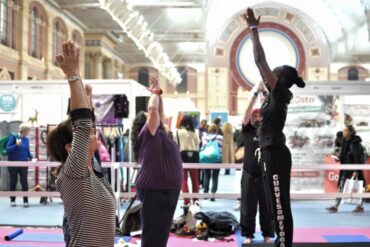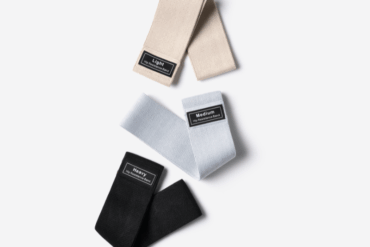What is body positive yoga?
Well, the answer is actually ‘It depends who you ask.’
The term ‘body positive’ has a slightly different meaning depending on who you ask. However, its core message is one of self-acceptance and a belief in oneself — regardless of shape, size or level of your yoga practice.
I can’t help feeling that the modern media appears to be perpetuating an untrue perception that only certain individuals with a particular body type practise yoga. Essentially individuals with a body that is tall and slim who can get their legs behind their heads.
However, it’s great to see that this perception is now being challenged by so many yogis. Take a look at the images coming through on Instagram. Wonderful women like Jessamyn Stanley who I had the pleasure of working with when she participated in a Q & A evening I organised during her visit to London last year. The attendees came away feeling inspired by hearing her story, as did I.
Since starting to teach body positive classes, I have seen that they attract a wide spectrum of individuals of various sizes, shapes, gender and ethnicity, making them so diverse and inclusive.
The diversity within the class has proved to me that everyone regardless of their size, whether they are curvy or thin, has some sort of disconnect with their body. All they essentially want is a safe, judgment-free space, where they can receive support and come home to their body and recognise how wonderful it is.
For those who are brave enough to come to class (and I do not say this lightly – there is a real fear of attending a yoga class or studio), then the safe space is there to be discovered. However, the hurdle of actually entering the room is tough. I recently overheard ‘I don’t want to attend a class where the front row is full of supermodels’. Some students are brave enough to go as far as booking to come to a class, but the fear is so strong they do not turn up, which is so sad for them and for me as a teacher.
The first thing individuals says to me regardless of size on or off the mat is that they are stiff and not flexible – as though they need to apologise for this. They don’t realise that being flexible is not a pre-requisite to practising yoga, but becomes a by-product. If I received a £1 for every time I heard this, I would be well on my way to becoming a wealthy yogi!
All bodies are beautiful and should be normalised. I really believe this. When I teach, I don’t see size, colour or gender. I just see the yogi. I hope that one day, all teachers and students will allow themselves to feel this way.
I have students that when they start their journey, they won’t even go on the floor, because they are afraid that they won’t be able to get up again. But simply by letting them know all they need to do is listen to and trust their body, they begin to breathe and move. It’s like they are given permission to relax into their body and just let go. Sometimes in their very first class, they are able to accomplish what they thought was impossible (a simple act which a lot of us take for granted). To witness the awe on their faces is pure joy as the transformation begins.
The simple fact that they are in the class shows me their determination and their commitment to make a change to their lifestyle and I celebrate that.
A body positive class is about modifying yoga poses for a wide range of body types, as well as having an appreciation and understanding of some of the difficulties that a student with a larger body may encounter.
These classes are not about separation. It is like having a pregnancy or chair yoga class, allowing students to enjoy the many wonderful benefits of yoga that will cater to their needs and bodies and to know that if all they want to do for the duration of the class is lie on their mat, then that is perfectly fine. That is yoga. We must remember that yoga DOES NOT care what you look like or make any assumptions about your abilities. Yoga is NOT just a physical practice.
The need for these classes are further reinforced by some of the feedback that I receive from students:
“Last Saturday, I dolled up and took myself to my first curvesome Yoga class. I like to think I can flex and bend, but I still can not bring myself to go to a “regular” Yoga class, as my local seems to have mature crowd and fear they wont completely understand my struggles.” Fran
Or take a look at what some yogis had to say about their before and after experiences of yoga.
What we don’t often remember is that as children, we are born yogi and flexible – like a completely natural happy baby pose! A perfect example. As you can guess, the name ‘happy baby’ stems from the origin of the pose. A happy smiling baby holding their toes and making baby sounds. In this pose, you start out on your back and then grab hold of your big toes with your index fingers and thumbs. Then pull your knees down towards your shoulders. It’s a very relaxing pose as demonstrated by babies, a natural posture for our bodies from the time we are born. If you can lay on your back, you can do happy baby pose.
Observe a child. Have you ever watched how children perform different asanas at different stages of their development? For instance, as they learn to crawl and walk, they do the cat stretch to strengthen their spines and when they’re learning to stand, they spend lots of time in ‘downward dog’ pose before getting on their feet.
Children can inspire us in our yoga. Yoga is the most natural way for our bodies to move. For any body, any age, any ability.
Yoga is for every body.
‘Yoga must be made to suit the individual, not the individual to suit yoga.’ T Krishnamacharya
The post Donna Noble on Body Positive Yoga appeared first on Blog – Yogamatters.



